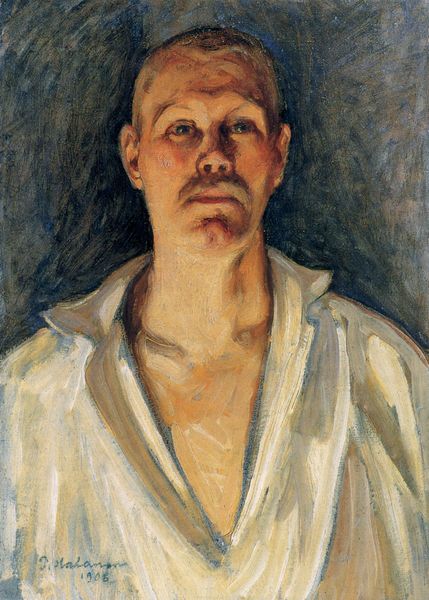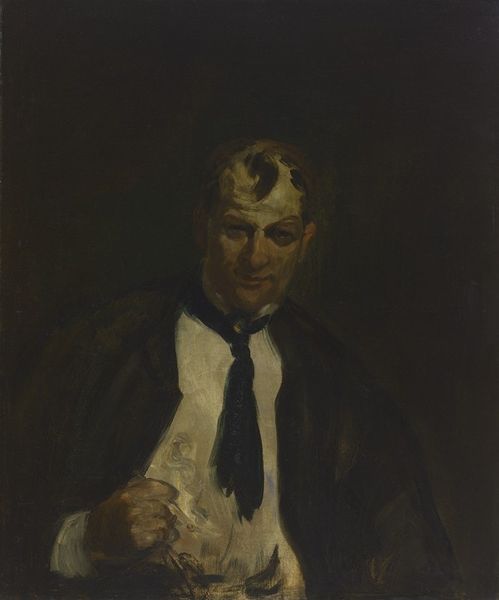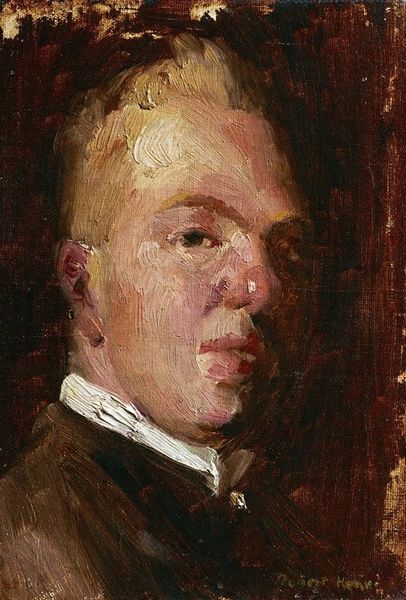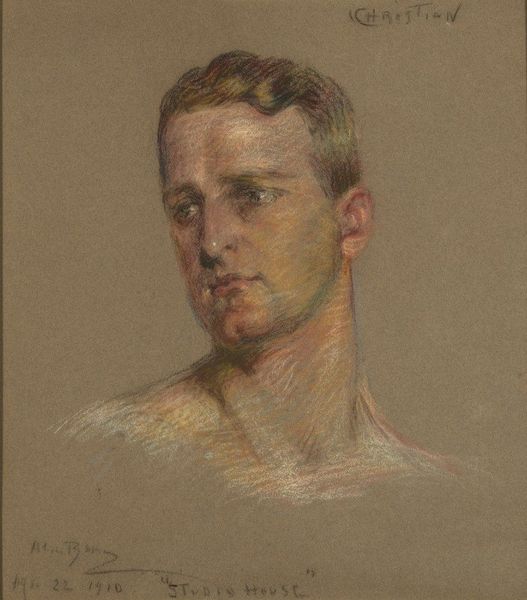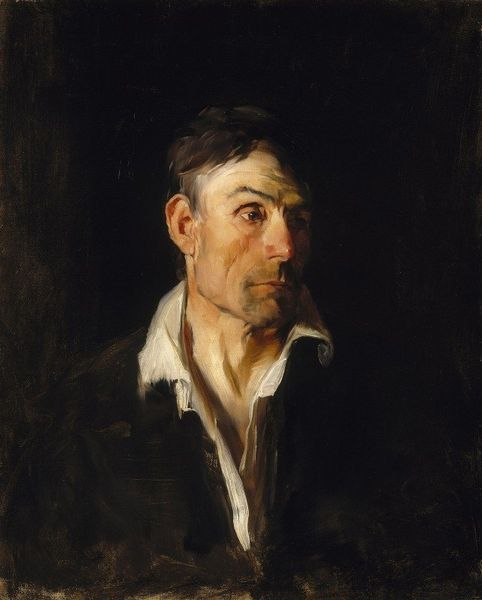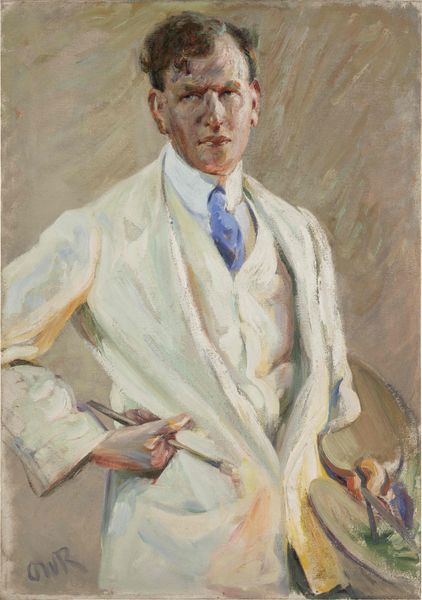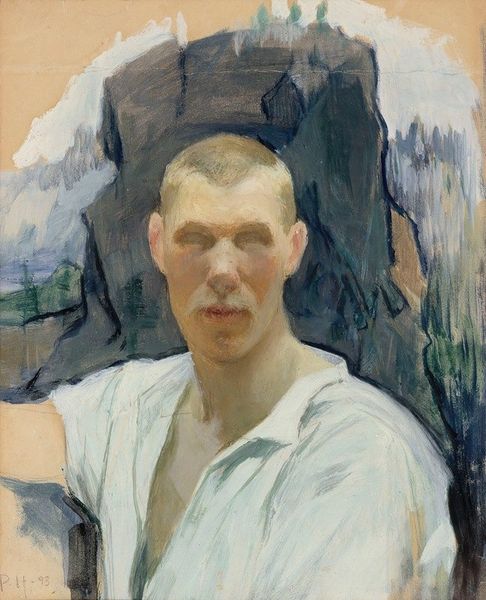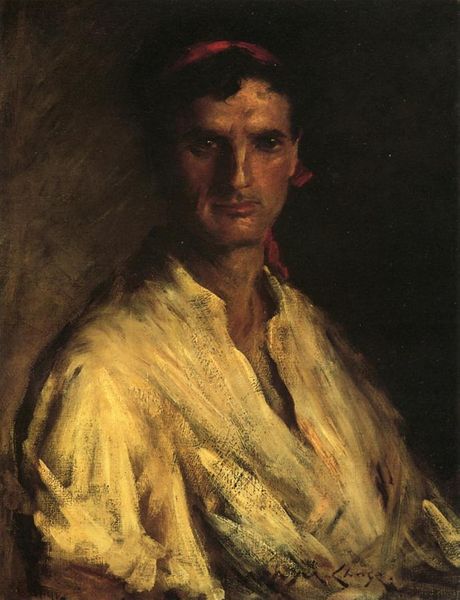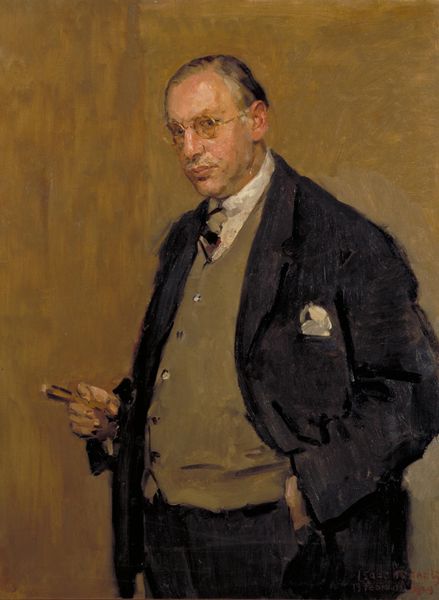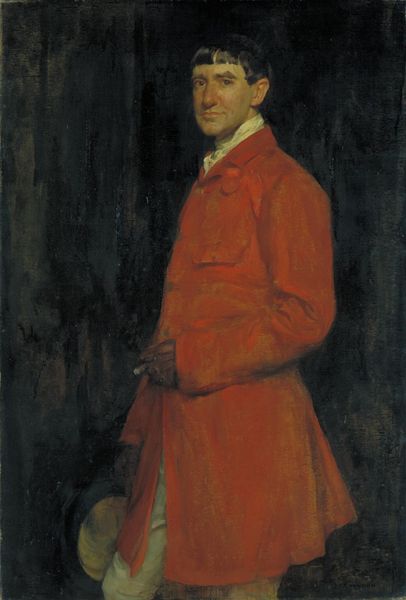
painting, oil-paint
#
portrait
#
painting
#
oil-paint
#
oil painting
#
romanticism
#
realism
Copyright: Public domain
Editor: Here we have Nikolay Bogdanov-Belsky’s oil painting, "Portrait of Feodor Chaliapin", created in 1915. The palette seems very constrained, mostly earth tones offset by white, and the brushwork is quite loose, particularly in the clothing. What strikes you most about the painting's formal elements? Curator: The power of this piece, for me, resides in its interplay of form. Consider the tension between the figure and the ground; the relatively smooth handling of the face contrasts dramatically with the more gestural, almost abstract treatment of the background and the subject’s attire. Note also the use of light; it sculpts the face, drawing our eye to the gaze, which leads our sightlines further into pictorial space. Editor: I see what you mean. The sharp focus on the face really pulls you in. It’s like a spotlight effect, achieved purely through paint application. Why do you think the artist chose such a contrasting approach for the rest of the composition? Curator: The differential in execution can speak volumes. The focused detail on the face suggests a desire to capture not just a likeness, but a certain psychological presence, whereas the looser brushwork elsewhere might be interpreted as a diminishing of the figure’s materiality—his physical presence matters less than his spirit. Do you find the stark, raking light compelling or perhaps a bit artificial? Editor: I think the lighting contributes to the idealized feeling – romanticized in some ways. It’s almost theatrical. Thanks for helping me notice those contrasts; I see how strategically the artist used the formal elements. Curator: Indeed. Observing these formal elements enables a deeper reading of pictorial logic; we see that choices in color and composition structure meaning, making way for interpretation.
Comments
No comments
Be the first to comment and join the conversation on the ultimate creative platform.
